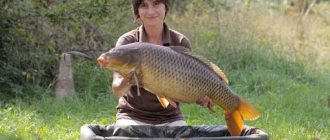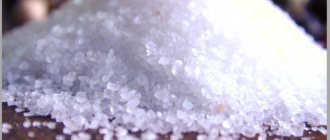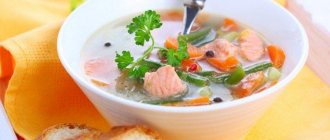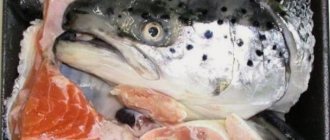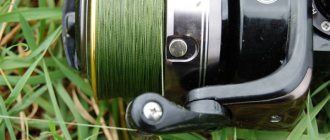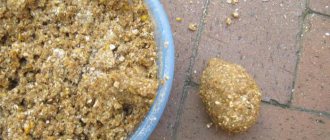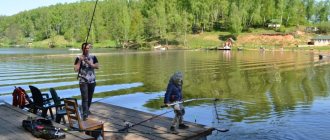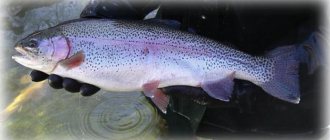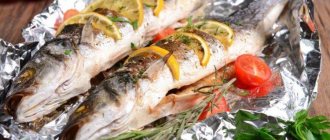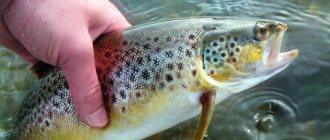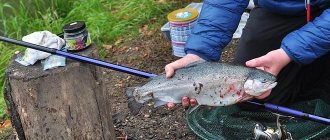Gennady Shelyag | January 4, 2021
I have been approaching this topic, which I want to tell you about, dear readers, for a very long time. Probably since I caught my first trout on a primitive float tackle on the Khosta River in my distant childhood. When I became seriously interested in fly fishing, trout fishing in the mountain rivers of the Black Sea coast continued to remain a mystery to me. Yes, there were some successes, but there were no stable results and no understanding of how and what to do. So this topic turned out to be one of the most difficult for me in fly fishing practice.
Now long hikes in the mountains, numerous fishing trips on the rivers of the Krasnodar Territory and Abkhazia, trials, errors and victories are behind us. And although, of course, it is difficult to compare, catching salmon with an artificial “fly” on the Kola Peninsula was much easier for me.
Fishing all year round is important
So, let's begin. The biggest advantage of trout fishing in the Caucasus is its all-season nature. With the exception of October, spawning time, it can be caught all year round. Moreover, the general rule that you can fish with a dry fly only in the summer months, when there is an outbreak of insects, can be safely broken here. It all depends on where the trout are located. If it is aground, it will most often react to a “fly” floating along the surface.
If it is hidden in deep holes near the bottom and under rocks, then it is better to use “nymphs” and streamers with heavy tungsten heads, which allow you to quickly deepen your bait. However, the use of sinking leaders is most often not necessary - the fished areas of most rivers and streams are too small for long retrieves.
Fish nutrition
The food for trout are small crustaceans, as well as insect larvae, small mollusks, fish, insects that have fallen into the water, tadpoles, even small mammals and frogs. Feeding occurs in the morning or evening, and the trout often jumps out of the reservoir after flying insects. Fish love to feast on eggs, even their own, if they are not well hidden.
Large individuals suffer from the fact that they can eat their own young. Trout receive a large amount of food during thunderstorms and winds, when, due to bad weather, a large number of all kinds of insects appear in the water. It is during such periods that fish are especially active and swim close to the surface. Apparently, for the same reason, trout prefer water bodies with dense vegetation on the banks. In the summer heat, fish try to stay close to the springs. Not finding them, they can climb into holes, falling into thermal stupor, then they can be caught with almost bare hands. And at other times they are very agile and resourceful, trying to take cover at the slightest danger.
The right trout rod
I will try to describe the fly fishing gear for catching the local brook trout. As a supporter of light and delicate gear, I recommend using 2nd - 3rd class rods 7 - 8 feet long.
A reel of the appropriate class must accommodate a floating torpedo-shaped line and 100 m of 15 - 20 lb backing. In order not to have to increase the class of the reel, maintaining a minimum gap of 3 - 4 mm after winding all the components of your equipment onto it, you should use the thinnest backing that you can get. Many will say that when fishing for brook trout, they have never had to let go of the line before backing.
Yes, this is true, as is the fact that even in small rivers there are trout weighing more than one and even more than two kilograms. The capture of such monsters, of course, is rare, but you should always be prepared for it. In addition, when fishing for Caucasian trout, it is possible that you will be bitten by Black Sea sea trout, the size of which can completely stun you. Here you definitely can’t do without a reserve of backing.
Catching and breeding of brook trout
It is caught in natural reservoirs, artificially bred for sport in rivers and streams, and is also an object of pond farming. Trout is intensively bred as a sport fishery in Western Europe. Pond trout farms engaged in breeding and growing brook trout are located in the Leningrad region, Krasnodar region and Western Ukraine. Brook trout has long been acclimatized in South Africa, Australia, Tasmania, and New Zealand.
pisciculture.ru
Coloring
. Brown trout, with a large number of red spots on the back and sides of the body, which also extend onto the dorsal and adipose fins, are the main representatives of the ichthyofauna of fast-flowing cold streams and rivers with pebbly soil. As the main fish, regions with spring flowing water - trout regions - owe their name to it.
Sometimes you can find brook trout that are missing the red dots. When crossed with brown trout, specimens with silver colored scales are obtained. Depending on their habitat and color, brook trout are called mountain trout, stone trout, alpine trout, golden trout, silver trout, forest trout, etc. Each individual fish can change its color and adapt to environmental conditions, as a result of which the red dots may disappear. Fish that are completely dark or almost black in color often turn out to be blind; they adapt to the optical darkness around them.
Teeth
are located on the vomer: on the plate - in a transverse row, and on the stem (in most cases) - in two rows (from 6 to 22 teeth). Males during spawning are brighter colored than females, which in turn become thicker as a result of the strong development of the ovaries, and can be identified by the swelling of the genital opening. But even after spawning, older males are distinguished by a hook-shaped lower jaw.
Habitats
. Unlike most other species of salmon fish, brook trout is especially shy and feels good only in reservoirs with washed out banks or in the bed of a reservoir, i.e., where there are natural shelters.
Depending on their age, trout live in areas of the stream close to or distant from the source. Juveniles prefer shallow coastal areas near the source. In the first year of life, the fish moves slightly up the stream to deeper, quiet places with small washouts. In the deepest places, namely in standing areas or areas with slow currents, as well as under washed-out rhizomes, the largest trout are hidden.
Once trout have found favorable habitats, they do not leave them so easily. This only occurs when water quality deteriorates or there is prolonged turbidity, to which fish are very sensitive, and causes migration.
Trout are not exclusive to high-altitude or mid-altitude streams. It can also be found in streams overgrown with vegetation that flow through low-lying meadows. All reservoirs in which trout live have one common property, namely: they are supplied with water from nearby sources, that is, cold, oxygenated water.
Trout live scatteredly in the streams of trout regions and make only minor migrations during spawning or high water. Sometimes it can rise into the regions inhabited by grayling or even barbel.
In streams, as in ponds, if there is enough oxygen, trout can tolerate temperatures up to 22 ° C. The weight of trout reaches 2 kg, and in some cases 5 or even 10 kg.
Widened and straightened streams and rivers, devoid of refuges, are completely unsuitable for shy brook trout. It also migrates when streams are regularly stocked with fish.
Nutrition
. At the initial stages of development, brook trout feed mainly on small animals, which they find in thickets of vegetation or near stones. As trout age, they begin to consume larger animals, such as fish that live in streams (minnows, loaches), as well as their relatives, other larger fish and aquatic animals, such as shrew and frogs. In addition, it also eats land animals that fall into the water. Large trout are predators. If you examine the stream, lift up the stones and turn them over, you can find numerous accumulations of small animals, which themselves or their larvae also serve as food for trout.
In reservoirs with a high lime content, a typical representative of the lower crustaceans of trout streams lives - the brook amphipod, the presence of which guarantees a high growth rate of trout. Amphipods live on aquatic plants, mainly on decomposed plant matter, between leaves that have fallen into the water, and in the washed thin rhizomes of coastal plants, especially alder. An adult amphipod is 1 cm long. It can also be grown artificially.
Along with amphipods, you can find large numbers of caddisfly larvae - an essential part of trout's food. The larvae of mayflies and stoneflies, as well as jerks, are of the same importance. According to new data, in a small medium-altitude mountain stream, at least 8,000 aerial insects live per 1 m2 of water surface, the larvae of which live in the water. Plants flooded with water serve as food for the larvae. With an abundance of natural food, trout reaches a large mass within a few years.
In cold high-mountain streams with sparse vegetation and food shortages, trout grow to only 16-18 cm over several years and rarely reach a weight of more than 150 g.
Fish productivity of trout stream
. The fish productivity of natural trout streams ranges from 80 to 100 kg/ha, and of individual reservoirs - from 250 to 400 kg/ha per year.
At dusk, trout leave their hiding places in search of food, but always return to their old place. She feels safe in the shelter.
Puberty
. Sexual maturity of trout occurs at a length of 20 cm, and in reservoirs with a poor food supply - at a length of 15 cm. In males this occurs in the 2nd year, and in females - in the 3-4th year of life.
Spawning
. Trout spawns from October to December, but there is a shift in the beginning and end of spawning depending on the water temperature and the nature of the reservoir. Thus, trout spawn in mountain streams earlier than in floodplain streams. Sexually mature females look for shallow places with a pebble bottom to spawn eggs. In the absence of such places, the fish migrates up the river until it finds a suitable area. Here the breeders live in pairs or there are several males per female. During spawning, the female uses her tail to knock out a hole the size of a plate in the pebbles and lays eggs there, which are immediately fertilized by the male’s sperm. The spawning act is accompanied by certain behavior of the males. Thus, the male often stands slightly ahead of the female, scurries around her and thereby encourages her to lay eggs.
Determination of gender
. Males are much more numerous than females. In the practice of breeding brook trout, no attention is paid to the sex ratio, since planting material is sold, as a rule, before sexual maturity occurs.
Fertility
. The fertility of females varies depending on the size of the breeders. On average, it is about 2000 eggs per 1 kg of fish weight. Small trout have smaller eggs, and large trout have larger eggs, but the relative fecundity of large fish is reduced due to the larger size of the eggs.
The process of spawning lasts in most cases several days, the fish then continuously remain in the spawning areas. After the end of spawning, the females lightly cover their eggs with pebbles and migrate to their former habitats.
Embryonic and postembryonic development
. The development of eggs lasts 2–3 months, or 400–550 degree days. As soon as the shell of the egg bursts, the larva hatches, and, as a rule, tail first. The larvae, lying helpless in the pebbles for several weeks, are saved from hunger by their yolk sacs, the contents of which are gradually absorbed. Then the fish begin to actively swim and look for their food on plants and stones. Due to the helplessness of the juveniles in the first weeks of life, natural waste is very large. In addition, the larvae are in danger of being eaten by ducks. Therefore, spawning reservoirs should be protected from ducks during this period.
Juvenile coloration
. Juvenile brook trout, like other salmonids, in most cases have from 8 to 13 blackish oval transverse stripes along the body, which appear as small spots on the lateral line. They disappear before the onset of puberty. In any stream with an abundant amount of food, in the first year the trout reaches a length of 10 cm. In three years it reaches a mass of at least 200 g, and large specimens - 300-500 g.
Meat color
. The color of trout meat depends on the food. When trout feed on amphipods, they receive the red pigment carotene, which gives the meat the desired salmon color.
www.activestudy.info
Fly line qualities
The floating torpedo-shaped cord can be chosen arbitrarily. The main thing is that it is elastic and easily straightens in water into an even line, without twisting into a spiral. And some inexpensive cords suffer from this drawback. Most often, you should select a line one class higher than the class of your rod. For example, for a fishing rod of class #2 - a 3rd class line, and for a fishing rod of class #3 - a 4th class.
Much of this choice depends on your casting technique and the characteristics of the rod, so it is better if an experienced specialist selects the rod, reel and cord for you. Properly balanced fly fishing gear is very important for successful fishing. It is often said that the color of the line does not matter, but for trout fishing I would recommend white, gray or another dull color that is clearly visible on the surface of the water.
Do not use large connectors
Most high-quality, expensive cords are equipped with a loop for connecting the cord to the leader in a “loop-to-loop” manner. If your cord does not have such a loop, then I recommend removing the braid from the tip of the cord to the cord and forming a neat small loop on it.
Use a drop of glue (for example - Aquasure ) to fix the place where the braid is cut from the cord so that the tip of the cord does not get wet and does not become sinking. You should not use large, rough connectors that attract fish larger than your fly. The connection between the line and the leader should be very neat, delicate and as little visible as possible to the fish.
Layout of leash and leader
Next: no conical leaders, just a leader with a diameter of 0.16 mm and a length of 1 - 1.2 m and a leash of 0.12 mm / 1 - 1.2 m. A loop is knitted at the end of the leader, with which it is connected to the tip of the cord using the " loop to loop." The undergrowth is connected to the leash using a working knot that you have tested. Any “fly”, be it dry or wet, is tied to the leash using the “loose loop” method.
I believe that every “fly” with such a mount plays much better on the surface of the water or in its thickness and takes the correct natural position during the retrieve. All components in your equipment must be of exceptional quality, tested, tightened “wet” and capable of holding the maximum load as a percentage of the maximum breaking load of the fishing line.
Quality of the leader material
Speaking of leader material, we can say that ideally you should use a specialized fluorocarbon leader material for fly fishing. However, as a consumable material it is still very expensive, and therefore calibrated 100% fluorocarbon of the required diameters can be used in small unwindings. Fishing often takes place at very shallow depths in crystal clear water and in bright sunshine. In such conditions, fluorocarbon of small diameters is the most invisible to fish.
During intensive fishing, the leash and leader quickly become frayed and twisted, so it is worth replacing them more often. When fishing on small streams, it is better to reduce the length of the leader and leader to 0.5 m. In some cases, you can use a leader of 0.1 - 0.11 mm, but you will need to closely monitor its strength, and make the hooks very soft. When fishing on large rivers, a 0.2 mm leader with a 0.16 mm leader is used.
Variety
Climatic conditions in Russia are suitable for three main species of this family:
- lake (Karelian);
- stream;
- rainbow.
Lake trout lives in cold, deep reservoirs of Karelia (Lake Ladoga and Onega). Representatives of this species can live at depths of more than 100 meters. The size of an adult trout is 1 meter.
Brook trout (trout) is a freshwater inhabitant and leads a sedentary lifestyle. Representatives are found in cold streams and rivers, with clear water and strong currents. An adult reaches 1–2 kg.
Rainbow trout is the most common species in Russia. Private fisheries and ponds are stocked with this species of salmon, so paid fishing brings a lot of income and is popular among fans of spinning fishing.
Briefly about flies
I recommend having a very diverse assortment of “flies”, since the local trout often bites on baits that do not in any way imitate their natural food. The main size of “flies” is on hooks No. 6 – 10. One of the differences between Caucasian trout and trout in central Russia and the North is that it is not tempted by very small baits. More often, on the contrary, she rushes at “flies” that barely fit in her mouth.
It is advisable to have dry Caddis made of deer fur and “nymphs” weighted with a tungsten head in the assortment. The latter will allow you to quickly bury the bait in the right place, and these are often recesses under rocks where large trout like to hide.
Where can I meet?
Where brook trout live, and these are large or very small rivers, transparent and saturated with oxygen. People have been using this feature for its intended purpose for a long time. It can also be found in lowland rivers.
The Kola Peninsula and sea basins are her favorite place in Russia.
The mountain streams of Western Europe are also inhabited by it. (from Murmansk to the Mediterranean Sea 1500 meters above sea level).
Advantages of delicate tackle
In a nutshell, I will explain the advantages of 2nd - 3rd class fly fishing tackle. The main thing, of course, is the sensations when biting and playing. The higher the class of gear, the more dulled these sensations are, but each of us wants to get maximum emotions and unforgettable sensations while fishing, right? A light, flexible and delicate rod makes it possible to work with very thin leashes. Small class fly lines are thinner, less visible and do not slap the water so loudly that it can scare away the fish.
Compact and mobile
Now about the equipment. There should not be any bright or white components in your clothing - this makes you visible and scares away the trout. Waders will be necessary in the icy water of mountain rivers even on hot summer days.
Polarized glasses will help you see the fish before they see you. Compactness, mobility - and nothing superfluous. Fly fishing for trout is about constantly moving and fishing new and fresh areas. For long journeys and when fishing in large rivers, you will need a staff. Of course, it should be special - folding and compact, attached to the waist belt of your waders.
Why only upstream?
Fishing tactics, especially on small rivers and streams, involve moving and casting only upstream. A trout that is frightened, speared and released by you always goes downstream. Believe it or not, as soon as one such runaway jumps into a fresh hole, the rest of her companions freeze and do not respond to any bait. The sections of the river that you or someone else have fished need a break of at least several hours before you can fish successfully on them again.
Therefore, try to make sure that if you go to new places, that no one has passed in front of you recently. It is not reasonable to stay in any one place, even the most promising one, for a long time. Trout bites most often occur on the first few casts. Deep holes, especially those located under rocks, should be fished first with a dry fly, and then with a wet fly with a heavy tungsten head, which quickly sinks and makes it possible to make a retrieve near the bottom.
Trout spawning areas
With the arrival of autumn, trout begin to move up the river to their favorite places for spawning. At the same time, she overcomes various obstacles or waterfalls up to 4 meters high. This indicates how strong this fish is and how strongly the reproductive instinct is developed.
Excellent places for spawning can be sections of the river that are located near rapids and have a fast current. The bottom of such areas should be covered with stones. It is among the stones that trout prefer to lay their eggs. In addition, interesting places for trout are sections of the river, the bottom of which is strewn with small pebbles, up to 3 cm in size. If the fish for some reason could not get to a suitable place, then it can spawn in areas where the bottom is strewn with large pebbles . The depth of the reservoir in these areas is not large and can reach no more than 1 meter. Therefore, its spawning can be observed from the shore.
Don't miss the time after the flood
Trout loves areas of the river under low-hanging branches of trees and bushes, near trunks dumped in the water. Casting in such places is extremely difficult and you cannot avoid torn flies and tangled leads. This is where the fisherman’s skill and endurance are tested. It must be remembered that after rains, the water level in rivers can rise significantly, and its opacity can make fly fishing impossible. This factor should be taken into account.
After the river is cleared and the water becomes clear, the fishing will always be the most successful for one or two days. Firstly, the fish are washed away by floods from high mountainous and inaccessible areas. Secondly, she is especially hungry, because... in very turbid water with a high water level, it is almost impossible to feed on it. At this time, the trout are more busy escaping the flow of mud, branches and everything that the river carries with it during a flash flood.
When trout go to spawn
In the third year of life, the trout are ready to spawn and are ready to travel to the places where they lay their eggs each year. Moreover, there are species of this fish that begin to spawn at two years, and there are also species whose sexual maturity is noted at 5-6 years. Regular brook trout do this at 3 years of age. Most fish species lay eggs with the arrival of spring, when nature begins to come to life. Moreover, each type of fish tries to spawn in acceptable conditions, when the water temperature begins to actively rise. Unfortunately, trout is not one of these fish species, because its spawning occurs in late autumn or early winter. This is the period when there is no longer any talk about fish spawning. Somewhere in October-November, trout go to spawn. The period may shift depending on the climatic characteristics of the region and the type of trout. The colder the climate zone, the earlier it goes to spawn.
The earliest spawning period is September, and the latest is December. At the same time, it should be noted that there are species of this fish that spawn throughout the year. And yet, the main types of trout begin to spawn in October-November.
After trout have appeared at traditional breeding grounds, they begin to actively spawn. Moreover, she does this early in the morning or late in the evening, after sunset. In the morning hours, it is not very active, but after dark and before midnight, trout activity is highest. Females get rid of all the eggs in several approaches, taking rest breaks. At the same time, she will be able to spawn all the eggs no earlier than a week.
With pure and clear thoughts
The amazingly beautiful nature of the Caucasus, picturesque places through which rivers and streams flow - all this will make your fishing unforgettable in any case. Fishing for trout with a fly is an endless treasure trove for testing and experimentation. This is a state in which you live, but do not exist. I don’t think that anyone manages to scroll through some everyday problems in their thoughts while fishing like this.
If someone feels so bad that he continues to do this, then he should stop, put the rod on the shore and plunge his head into the water three times in a row. And after that, with pure and clear thoughts, continue to enjoy the beauty of the landscapes, trying to find the key to the spotted beauty.
Growing cycle and technology
Growing trout takes quite a long time. In order for the fry to grow to the size of an adult fish within a few years, it is necessary to create suitable conditions. The equipment used for trout farming is also suitable for other types of fish. The difference lies in the unique conditions. To do this, it is recommended to first study the features of the natural environment in which the trout lives.
Suitable water chemistry for keeping trout includes the following standards:
- oxygen level - from 7 to 11 milligrams per liter (the necessary indicator will be provided by the aeration column);
- pH value – not lower than 6.5 and not higher than 8 (if it falls below the permissible norm, the fish stops reproducing; if it rises higher, the trout may die);
- nitrate concentration – up to 100 milligrams per liter (above this value poses a risk to fish);
- ammonia level - 0.1 milligrams per liter;
- hardness index – from 8 to 12;
- carbon dioxide content – up to 35 milligrams per liter;
- chlorine level – up to 0.01 milligrams per liter.
To check chemical indicators, special devices are used, which can be purchased at hardware stores.
Feeding fry and adult fish
Proper feeding determines how long it will take for the fry to grow to the size of an adult, and how tasty the fish will be. There are two types of trout food: organic and dry. Fish tastes better if the first type is used.
To give fish meat a red color, canthaxanthin should be added to the food.
Feeding of fry and adult fish is different. You should start feeding trout from the moment it is born. The diet for fry consists of:
- zooplankton (egg yolk may be added);
- meat and fish flour;
- fish oil.
You can prepare a mash by combining different feed options. The optimal number of feedings per day should not exceed 9 times. A thousand individuals require about 90 grams of food. There is a special floating and sinking type food available for sale that simplifies feeding.
Adults can be given dry and live food. The ratio of these species is divided approximately equally with a bias in favor of living species. The diet for adult fish consists of:
- chopped animal meat;
- fish waste;
- shrimp;
- water snails;
- insects
Fiber is also used to feed fish. It does not provide any benefit to the trout, but it loosens other types of food, making them better digestible.
Temperature
In a body of natural origin, it is difficult to regulate the temperature. Therefore, it is recommended to keep trout in a RAS. Depending on the age, the following indicators are suitable for this type of fish:
- from +6 to +12 degrees Celsius – for the ripening of caviar;
- from +10 to +14 degrees Celsius – for fry;
- from +14 to +16 degrees Celsius – for adult fish.
The temperature gradually rises as the trout grow.
Care and cultivation standards
In order for trout to develop well, you need to follow a number of tips. The water must have the right temperature and sufficient oxygen. It is necessary to check the serviceability of filters - water contamination can harm the fish.
It is recommended to separate small and large fish by placing them in separate containers. Thanks to this method, weak individuals will get more food and they will grow faster. During the spawning period, the best individuals should be selected to produce offspring.
With normal development, the weight of rainbow trout is:
- 30 grams – at the age of fry;
- 125 grams – one-year-old individuals;
- 200 grams – fish over two years old.
Brown trout develop more slowly, so the indicated indicators for it are lower at the same age.
